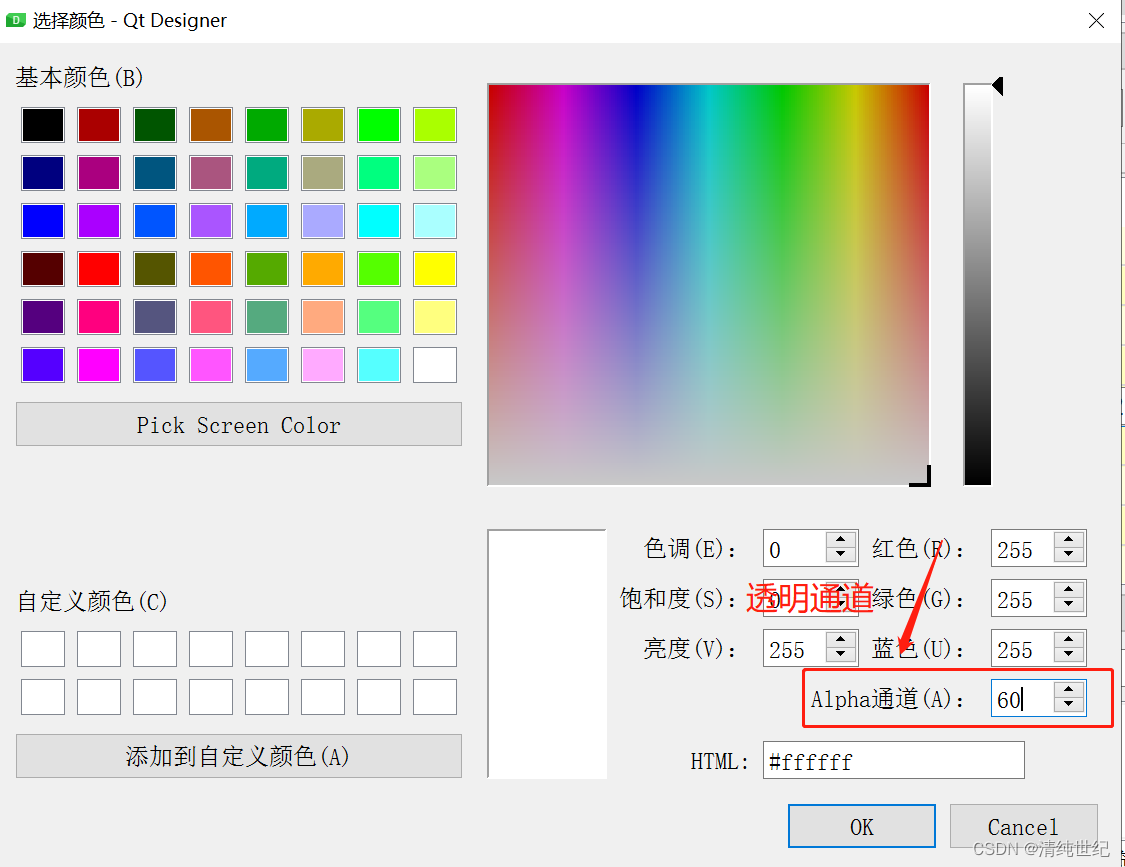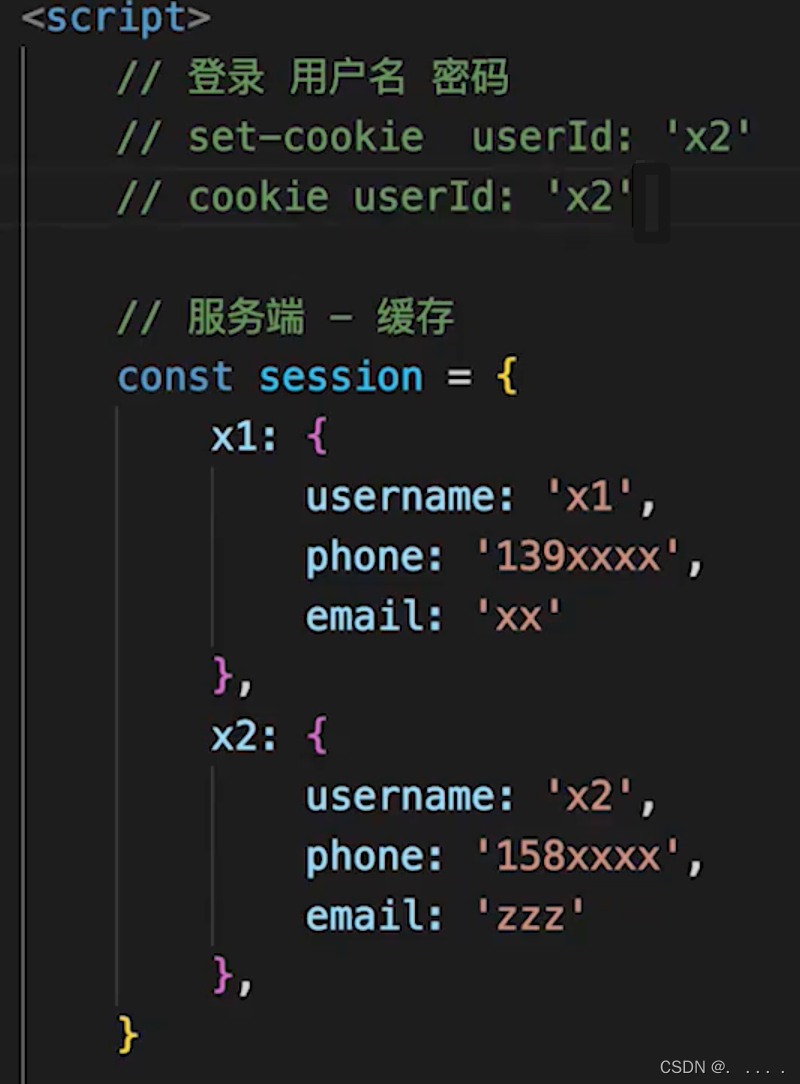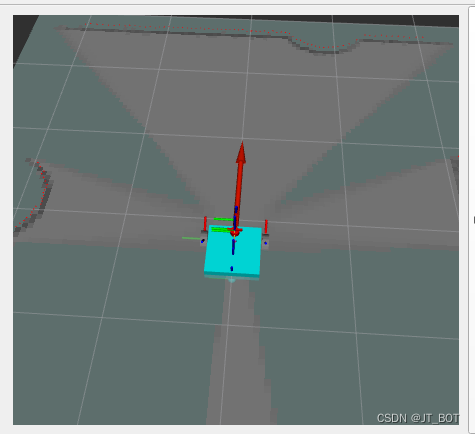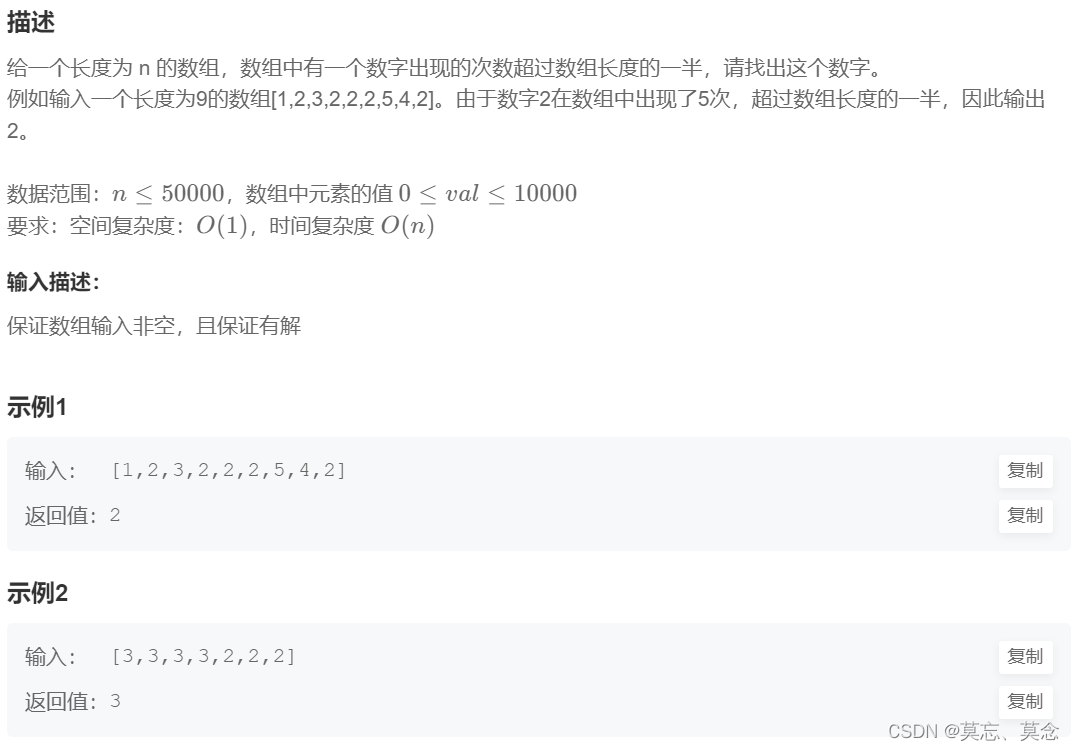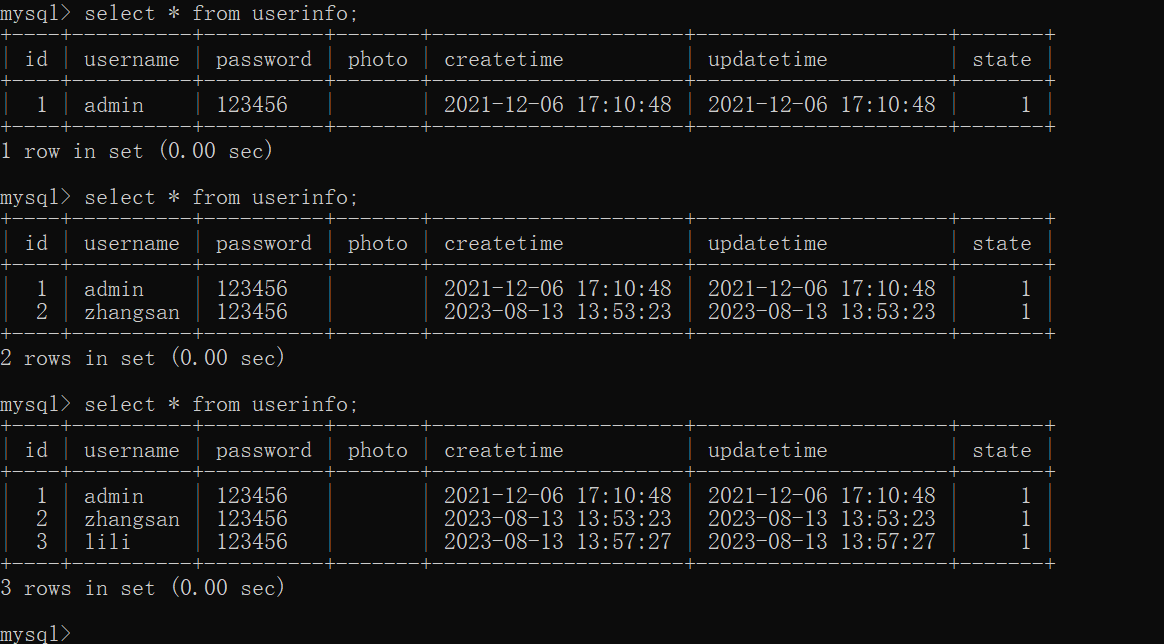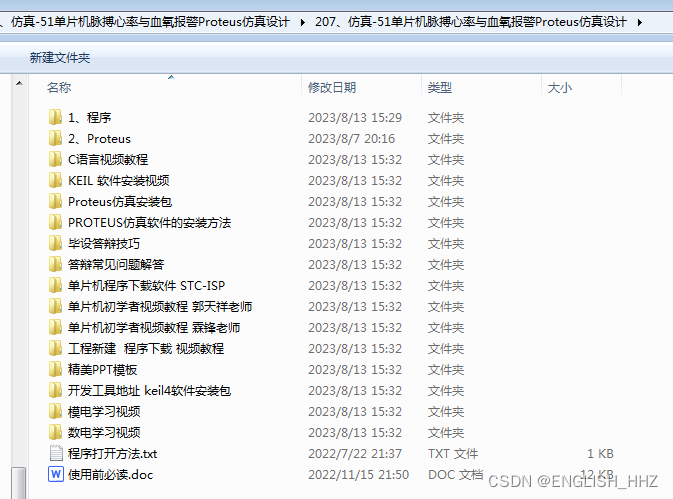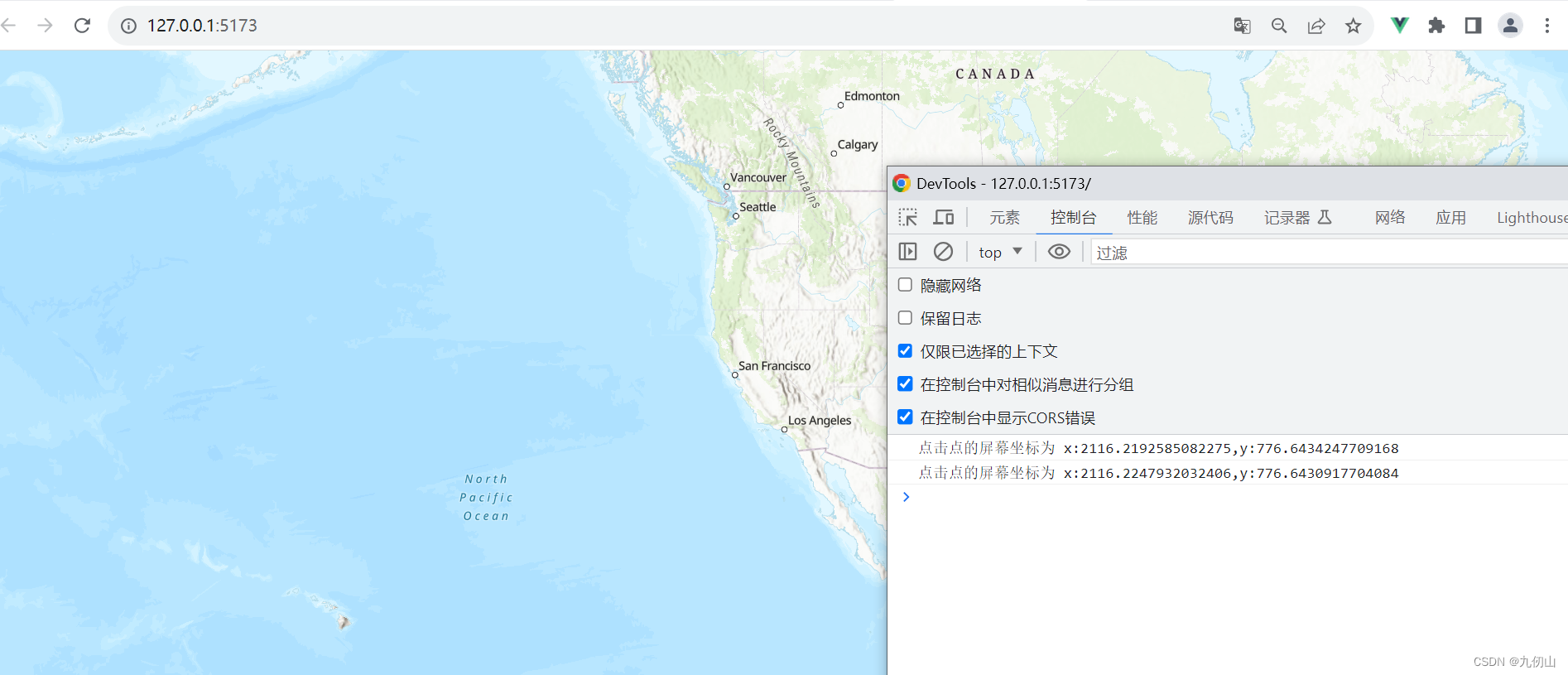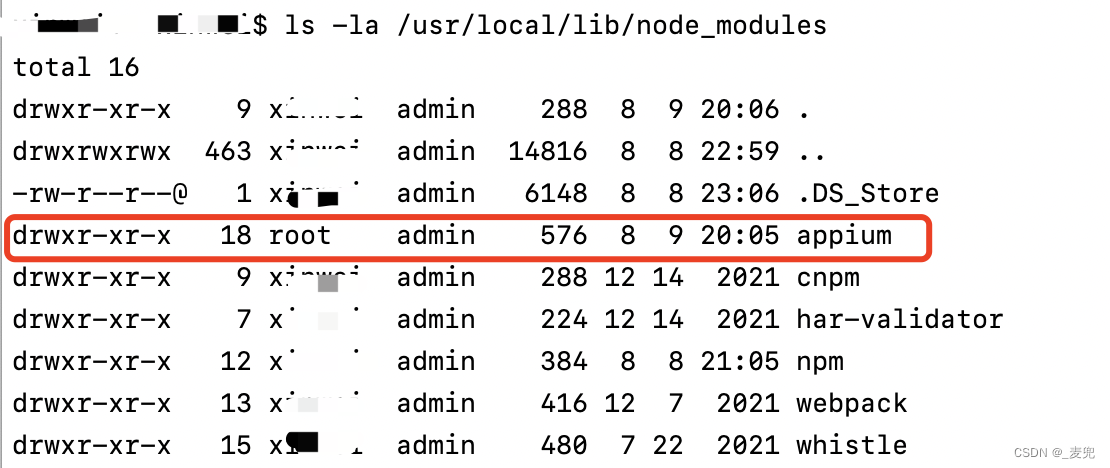一、SpringBoot概述
1. 简介
springboot是spring家族中的一个全新框架,用来简化spring程序的创建和开发过程。在以往我们通过SpringMVC+Spring+Mybatis框架进行开发的时候,我们需要配置web.xml,spring配置,mybatis配置,然后整合在一起,而springboot抛弃了繁琐的xml配置过程,采用大量默认的配置来简化我们的spring开发过程。
SpringBoot化繁为简,使开发变得更加的简单迅速。
2. 特性
(1) 能够快速创建基于spring的程序
(2) 能够直接使用Java main方法启动内嵌的Tomcat服务器运行springboot程序,不需要部署war包
(3) 提供约定的starter POM来简化Maven配置,让Maven的配置变得简单
(4) 自动化配置,根据项目的Maven依赖配置,springboot自动配置spring、springmvc等
(5) 提供了程序的健康检查功能
(6) 基本可以完全不使用xml配合文件,采用注解配置
3. 四大核心
自动配置、起步依赖、Actuator、命令行界面二、springboot入门案例
1. SpringBoot 项目开发步骤
(1)创建一个 Module,选择类型为Spring Initializr 快速构建
(2)设置 GAV 坐标及 pom 配置信息 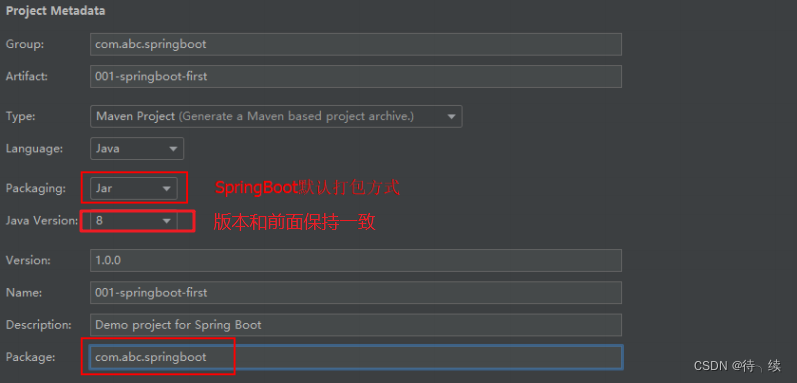
(3)选择 Spring Boot 版本及依赖
(4)设置模块名称、Content Root 路径及模块文件的目录,然后点击finish即可
(5)项目结构如下: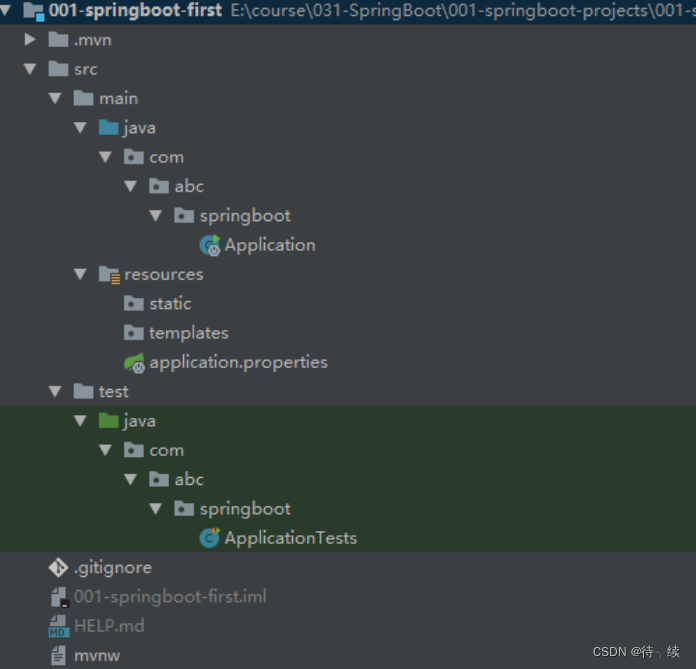
static:存放静态资源。如图片、CSS、JavaScript 等
templates:存放 Web 页面的模板文件
application.properties/application.yml 用于存放程序的各种依赖模块的配置信息,
比如 服务端口,数据库连接配置等
.gitignore:使用版本控制工具 git 的时候,设置一些忽略提交的内容
Application.java:SpringBoot 程序执行的入口,执行该程序中的 main 方法,
启动当前SpringBoot项目。(6)对pom.xml文件进行解释
<?xml version="1.0" encoding="UTF-8"?>
<project xmlns="http://maven.apache.org/POM/4.0.0"
xmlns:xsi="http://www.w3.org/2001/XMLSchema-instance"
xsi:schemaLocation="http://maven.apache.org/POM/4.0.0
http://maven.apache.org/xsd/maven-4.0.0.xsd">
<modelVersion>4.0.0</modelVersion>
<!--继承 SpringBoot 框架的一个父项目,所有自己开发的 Spring Boot 都必须的继承-->
<parent>
<groupId>org.springframework.boot</groupId>
<artifactId>spring-boot-starter-parent</artifactId>
<version>2.2.1.RELEASE</version>
<relativePath/> <!-- lookup parent from repository -->
</parent>
<!--当前项目的 GAV 坐标-->
<groupId>com.bjpowernode.springboot</groupId>
<artifactId>002-springboot-springmvc</artifactId>
<version>1.0.0</version>
<!--maven 项目名称,可以删除-->
<name>002-springboot-springmvc</name>
<!--maven 项目描述,可以删除-->
<description>Demo project for Spring Boot</description>
<!--maven 属性配置,可以在其它地方通过${}方式进行引用-->
<properties>
<java.version>1.8</java.version>
</properties>
<dependencies>
<!--SpringBoot 框架 web 项目起步依赖,通过该依赖自动关联其它依赖,不需要我们一个一个去添加
-->
<dependency>
<groupId>org.springframework.boot</groupId>
<artifactId>spring-boot-starter-web</artifactId>
</dependency>
<!--SpringBoot 框架的测试起步依赖,例如:junit 测试,如果不需要的话可以删除-->
<dependency>
<groupId>org.springframework.boot</groupId>
<artifactId>spring-boot-starter-test</artifactId>
<scope>test</scope>
<exclusions>
<exclusion>
<groupId>org.junit.vintage</groupId>
<artifactId>junit-vintage-engine</artifactId>
</exclusion>
</exclusions>
</dependency>
</dependencies>
<build>
<plugins>
<!--SpringBoot提供的打包编译等插件-->
<plugin>
<groupId>org.springframework.boot</groupId>
<artifactId>spring-boot-maven-plugin</artifactId>
</plugin>
</plugins>
</build>
</project>
2. 创建一个 Spring MVC 的 Spring BootController
(1)创建SpringBootController 类
注意:新创建的类一定要位于 Application 同级目录或者下级目录,否则 SpringBoot 加
载不到。
package com.bjpowernode.springboot.web;
import org.springframework.stereotype.Controller;
import org.springframework.web.bind.annotation.RequestMapping;
import org.springframework.web.bind.annotation.ResponseBody;
@Controller
public class SpringBootController {
@RequestMapping(value = "/springBoot/say")
public @ResponseBody String say() {
return "Hello,springBoot!";
}
} (2)启动Application类中的main方法
通过在控制台的输出,可以看到启动 SpringBoot 框架,会启动一个内嵌的 tomcat,端
口号为 8080,上下文根为空 。
(3)在浏览器中输入 http://localhost:8080/springBoot/say进行访问
3. 分析
(1)spring-boot-starter-parent 是一个 Springboot 的父级依赖,开发 SpringBoot 程序都需
要继承该父级项目,它用来提供相关的 Maven 默认依赖,使用它之后,常用的 jar
包依赖可以省去 version 配置
(2)Spring Boot 提供了一些默认的jar 包的依赖,可查看该父级依赖的 pom 文件
(3)如果不想使用某个默认的依赖版本,可以通过 pom.xml 文件的属性配置覆盖各个
依赖项,比如覆盖 Spring 版本:
<properties>
<spring-framework.version>5.0.0.RELEASE</ spring-framework.version >
</properties> (4) @SpringBootApplication 注解是 Spring Boot 项目的核心注解,主要作用是开启
Spring 自动配置,如果在 Application 类上去掉该注解,那么不会启动 SpringBoot程序
(5)main 方法是一个标准的 Java 程序的 main 方法,是boot项目启动运行的入口
(6)@Controller 及 @ResponseBody 依然是我们之前的 Spring MVC,因为 Spring Boot
的里面依然是使用我们的 Spring MVC + Spring + MyBatis 等框架
4. 核心配置文件格式
(1).properties 文件(默认采用该文件)
通过修改 application.properties 配置文件,修改默认 tomcat 端口号及项目上下文件根:
#设置内嵌 Tomcat 端口号
server.port=9090
#配置项目上下文根
server.servlet.context-path=/003-springboot-port-context-path
页面显示结果:(2) .yml 文件 :
项目名称:004-springboot-yml
yml 是一种 yaml 格式的配置文件,主要采用一定的空格、换行等格式排版进行配置。它能够直观的被计算机识别数据序列化格式,容易被人类阅读,yaml 类似于 xml,但是语法比 xml 简洁很多,值与前面的冒号配置项必须要有一个空格, yml 后缀也可以使用 yaml 后缀 。
注意:当两种格式配置文件同时存在时,使用的是.properties 配置文件。
(3)多环境配置(.properties方式)
在实际开发的过程中,我们的项目会经历很多的阶段(开发->测试->上线),每个阶段
的配置也会不同,例如:端口、上下文根、数据库等,那么这个时候为了方便在不同的环境
之间切换,SpringBoot 提供了多环境配置,具体步骤如下 :
为每个环境创建一个配置文件,命名必须为 application-环境标识.properties|yml
application-dev.properties (开发环境核心置文件)
#开发环境
#设置内嵌 Tomcat 默认端口号
server.port=8080
#设置项目的上下文根
server.servlet.context-path=/005-springboot-multi-environment-dev application-product.properties (生产环境核心置文件)
#生产环境
#配置内嵌 Tomcat 默认端口号
server.port=80
#配置项目上下文根
server.servlet.context-path=/005-springboot-multi-environment-product
application-test.properties (测试环境核心置文件)
#测试环境
#配置内嵌 Tomcat 端口号
server.port=8081
#配置项目的上下文根
server.servlet.context-path=/005-springboot-multi-environment-test
在总配置文件 application.properties 进行环境的激活
#SpringBoot 的总配置文件
#激活开发环境
#spring.profiles.active=dev
#激活测试环境
#spring.profiles.active=test
#激活生产环境
spring.profiles.active=product
(4)多环境配置(.yml方式)
application-dev.yml
#设置开发环境配置
server:
port: 8080 #设置 Tomcat 内嵌端口号
servlet:
context-path: /dev #设置上下文根
application-product.yml
#设置生产环境配置
server:
port: 80
servlet:
context-path: /product
application-test.yml
#设置测试环境配置
server:
port: 9090
servlet:
context-path: /test
在总配置文件 application.yml进行环境的激活
#springboot 总配置文件
#激活开发环境
#spring:
# profiles:
# active: dev
#激活测试环境
#spring:
# profiles:
# active: test
#激活生产环境
spring:
profiles:
active: product
(5)Spring Boot 自定义配置
在 SpringBoot 的核心配置文件中,除了使用内置的配置项之外,我们还可以在自定义配
置,然后采用如下注解去读取配置的属性值:
(A)@Value注解 用于逐个读取application.properties中的配置
案例演示:
(1) 在核心配置文件 applicatin.properties 中,添加两个自定义配置项 school.name 和
website。在 IDEA 中可以看到这两个属性不能被 SpringBoot 识别,背景是桔色的 :
.properties方式
.yml方式
#设置端口号及上下文根
server:
port: 9090
servlet:
context-path: /
school:
name: ssm
websit: http://www.baidu.com
(2)在 SpringBootController 中定义属性,并使用@Value 注解或者自定义配置值,并对其方法进行测试
@Controller
public class SpringBootController {
@Value("${school.name}")
private String schoolName;
@Value("${websit}")
private String websit;
@RequestMapping(value = "/springBoot/config")
public @ResponseBody String say() {
return schoolName + "------" + websit;
}
}
(3)重新运行 Application,在浏览器中进行测试 
(B)@ConfigurationProperties
作用:将整个文件映射成一个对象,用于自定义配置项比较多的情况 。
案例演示:
(1)在 com.abc.springboot.config 包下创建 ConfigInfo 类,并为该类加上 Component 和
ConfigurationProperties 注解,并在 ConfigurationProperties 注解中添加属性 prefix,可以区分同名配置 。
@Data
@Component
@ConfigurationProperties(prefix = "school")
public class ConfigInfo {
private String name;
private String websit;
}
(2)application.properties 配置文件
#设置内嵌 Tomcat 端口号
server.port=9090
#设置上下文根
server.servlet.context-path=/config
school.name=ssm
school.websit=http://www.baidu.com
(3)在 SpringBootController 中注入 ConfigInfo 配置类
@Autowired
private ConfigInfo configInfo;
(4)修改 SpringBootController 类中的测试方法
@RequestMapping(value = "/springBoot/config")
public @ResponseBody String say() {
return configInfo.getName() + "=======" + configInfo.getWebsit();
}
(5)重新运行 Application,在浏览器中进行测试 
(C)警告解决
在 ConfigInfo 类中使用了 ConfigurationProperties 注解后,IDEA 会出现一个警告,不影响程序的执行。
点击 open documentnation 跳转到网页,在网页中提示需要加一个依赖,我们将这
个依赖拷贝,粘贴到 pom.xml 文件中 即可。
<!--解决使用@ConfigurationProperties 注解出现警告问题-->
<dependency>
<groupId>org.springframework.boot</groupId>
<artifactId>spring-boot-configuration-processor</artifactId>
<optional>true</optional>
</dependency>
(D)中文乱码
如果在 SpringBoot 核心配置文件中有中文信息,会出现乱码:
一般在配置文件中,不建议出现中文(注释除外)
如果出现中文,可以先转化为 ASCII 码
2.5 Spring Boot 前端使用 JSP
(1)在 pom.xml 文件中配置以下依赖项
<!--引入 Spring Boot 内嵌的 Tomcat 对 JSP 的解析包,不加解析不了 jsp 页面-->
<!--如果只是使用 JSP 页面,可以只添加该依赖-->
<dependency>
<groupId>org.apache.tomcat.embed</groupId>
<artifactId>tomcat-embed-jasper</artifactId>
</dependency>
<!--如果要使用 servlet 必须添加该以下两个依赖-->
<!-- servlet 依赖的 jar 包-->
<dependency>
<groupId>javax.servlet</groupId>
<artifactId>javax.servlet-api</artifactId>
</dependency>
<dependency>
<groupId>javax.servlet.jsp</groupId>
<artifactId>javax.servlet.jsp-api</artifactId>
<version>2.3.1</version>
</dependency>
<!--如果使用 JSTL 必须添加该依赖-->
<!--jstl 标签依赖的 jar 包 start-->
<dependency>
<groupId>javax.servlet</groupId>
<artifactId>jstl</artifactId>
</dependency>
(2)在 pom.xml 的 build 标签中要配置以下信息
SpringBoot 要求 jsp 文件必须编译到指定的 META-INF/resources 目录下才能访问,否则
访问不到。其实官方已经更建议使用模板技术。
<!--
SpringBoot 要求 jsp 文件必须编译到指定的 META-INF/resources 目录下才能访问,否则访问
不到。
其它官方已经建议使用模版技术
-->
<resources>
<resource>
<!--源文件位置-->
<directory>src/main/webapp</directory>
<!--指定编译到 META-INF/resources,该目录不能随便写-->
<targetPath>META-INF/resources</targetPath>
<!--指定要把哪些文件编译进去,**表示 webapp 目录及子目录,*.*表示所有文件-->
<includes>
<include>**/*.*</include>
</includes>
</resource>
</resources>
(3)在 application.properties 文件配置 Spring MVC 的视图展示为jsp,这里相当于 Spring MVC 的配置。
#SpringBoot 核心配置文件
#指定内嵌 Tomcat 端口号
server.port=8090
#配置 SpringMVC 视图解析器
#其中:/ 表示目录为 src/main/webapp
spring.mvc.view.prefix=/
spring.mvc.view.suffix=.jsp
(4)在 com.abc.springboot.controller 包下创建 JspController 类
@Controller
public class SpringBootController {
@RequestMapping(value = "/springBoot/jsp")
public String jsp(Model model) {
model.addAttribute("data","SpringBoot 前端使用 JSP 页面!");
return "index";
}
}
(5)在 src/main 下创建一个 webapp 目录,然后在该目录下新建index.jsp 页面
注意: 如果在webapp目录下右键,没有创建jsp的选项,可以在Project Structure中指定webapp为 Web Resource Directory 。
(6)在 index.jsp 中获取 Controller 传递过来的数据
(7)重新运行 Application,通过浏览器访问测试
3 SpringBoot框架Web开发
通过实际代码案例进行梳理:
3.1 Spring Boot 集成 MyBatis
通过 SpringBoot +MyBatis 实现对数据库学生表的查询操作的实现步骤:
(1)创建新的数据库springboot并向表中插入数据
(2)创建一个新的 SpringBoot 的 Module
创建项目的过程省略
(3)在 pom.xml 中添加相关 jar 依赖
<!--MyBatis 整合 SpringBoot 的起步依赖-->
<dependency>
<groupId>org.mybatis.spring.boot</groupId>
<artifactId>mybatis-spring-boot-starter</artifactId>
<version>2.0.0</version>
</dependency>
<!--MySQL 的驱动依赖-->
<dependency>
<groupId>mysql</groupId>
<artifactId>mysql-connector-java</artifactId>
</dependency>
(4)在 Springboot 的核心配置文件 application.properties 中配置数据源
#配置内嵌 Tomcat 端口号
server.port=9090
#配置项目上下文根
server.servlet.context-path=/010-springboot-web-mybatis
#配置数据库的连接信息
#注意这里的驱动类有变化
spring.datasource.driver-class-name=com.mysql.cj.jdbc.Driver
spring.datasource.url=jdbc:mysql://localhost:3306/springboot?useUnicode=true&characterEncoding=UTF-8&useJDBCCompliantTimezoneShift=true&useLegacyDatetimeCode=false&serverTimezone=GMT%2B8
spring.datasource.username=root
spring.datasource.password=root
(5)开发代码(代码生成器)
使用 Mybatis 反向工程生成接口、映射文件以及实体 bean,具体步骤参见附录 1
(A)在 web 包下创建 StudentController 并编写代码
@Controller
public class StudentController {
@Autowired
private StudentService studentService;
@RequestMapping(value = "/springBoot/student")
public @ResponseBody Object student() {
Student student = studentService.queryStudentById(1);
return student;
}
}
(B)在 service 包下创建 service 接口并编写代码
public interface StudentService {
/**
* 根据学生标识获取学生详情
* @param id
* @return
*/
Student queryStudentById(Integer id);
}
(C)在 service.impl 包下创建 service 接口并编写代码
@Service
public class StudentServiceImpl implements StudentService {
@Autowired
private StudentMapper studentMapper;
@Override
public Student queryStudentById(Integer id) {
return studentMapper.selectByPrimaryKey(id);
}
}
(D)如果在 web 中导入 service 存在报错,可以尝试进行如下配置解决
(E) 在 Mybatis 反向工程生成的 StudentMapper 接口上加一个 Mapper 注解
@Mapper 作用:mybatis 自动扫描数据持久层的映射文件及 DAO 接口的关系
@Mapper
public interface StudentMapper {
}
(F)默认情况下,Mybatis 的 xml 映射文件不会编译到 target 的 class 目录下,所
以我们需要在 pom.xml 文件中配置 resource 。
<resources>
<resource>
<directory>src/main/java</directory>
<includes>
<include>**/*.xml</include>
</includes>
</resource>
</resources>
(G)启动 Application 应用,浏览器访问测试运行
3.2 DAO 的其它开发方式
方式一:
(A)注释掉 StudentMapper 接口上的@Mapper 注解
(B)在运行的主类上添加注解包扫描MapperScan("com.abc.springboot.mapper")
@SpringBootApplication
@MapperScan("com.abc.springboot.mapper")
public class Application {
或
@SpringBootApplication
//Mybatis 提供的注解:扫描数据持久层的 mapper 映谢配置文件,DAO 接口上就不用加@Mapper
//basePackages 通常指定到数据持久层包即可
@MapperScan(basePackages = "com.abc.springboot.mapper")
public class Application {
方式二:
因为 SpringBoot 不能自动编译接口映射的 xml 文件,还需要手动在 pom 文件中指定,
所以有的公司直接将映射文件直接放到 resources 目录下 ,在 resources 目录下新建目录 mapper 存放映射文件,将 StudentMapper.xml 文件移到resources/mapper 目录下:
在 application.properties 配置文件中指定映射文件的位置,这个配置只有接口和映
射文件不在同一个包的情况下,才需要指定:
# 指定 Mybatis 映射文件的路径
mybatis.mapper-locations=classpath:mapper/*.xml
3.3 Spring Boot 事务支持
springboot事务底层依然采用的是 Spring 本身提供的事务管理。
在入口类中使用注解@EnableTransactionManagement开启事务支持
在访问数据库的service方法上添加注解@Transactional即可
在上述案例的基础上,通过 SpringBoot +MyBatis 实现对数据库学生表的更新操作,在 service 层的方法中构建异常,查看事务是否生效:
(1)在 StudentController 中添加更新学生的方法
@RequestMapping(value = "/springboot/modify")
public @ResponseBody Object modifyStudent() {
int count = 0;
try {
Student student = new Student();
student.setId(1);
student.setName("Jack");
student.setAge(33);
count = studentService.modifyStudentById(student);
} catch (Exception e) {
e.printStackTrace();
return "fail";
}
return count;
}
(2)在 StudentService 接口中添加更新学生方法
int modifyStudentById(Student student);
(3)在 StudentServiceImpl 接口实现类中对更新学生方法进行实现,并构建一个异常,同时在该方法上加@Transactional 注解。
@Override
@Transactional //添加此注解说明该方法添加的事务管理
public int update(Student student) {
int updateCount = studentMapper.updateByPrimaryKeySelective(student);
System.out.println("更新结果:" + updateCount);
//在此构造一个除数为 0 的异常,测试事务是否起作用
int a = 10/0;
return updateCount;
}
(4)在Application类上加@EnableTransactionManagement开启事务支持。
@EnableTransactionManagement 可选,但是业务方法上必须添加@Transactional 事务才生效
@SpringBootApplication
@MapperScan(basePackages = "com.abc.springboot.mapper")
@EnableTransactionManagement //开启事务支持(可选项,但@Transactional 必须添加)
public class Application {
3.4 Spring Boot 下的 Spring MVC(注解)
springboot下的springMVC主要有以下注解:
(1)@Controller:Spring MVC 的注解,处理 http 请求
(2)@RestController :@Controller 与@ResponseBody 的组合注解
如果一个 Controller 类添加了@RestController,那么该 Controller 类下的所有方法都相当
于添加了@ResponseBody 注解 ,用于返回字符串或json数据。
创建 MyRestController 类,演示@RestController 替代@Controller + @ResponseBody
@RestController
public class MyRestController {
@Autowired
private StudentService studentService;
@RequestMapping("/boot/stu")
public Object stu(){
return studentService.getStudentById(1);
}
}
(3)@RequestMapping:支持 Get 请求,也支持 Post 请求 。
(4)@GetMapping :只支持 Get 请求,主要用于查询操作。
(5)@PostMapping:只支持Post请求,主要用于新增数据。
(6)@PutMapping:只支持put请求,主要用于修改数据
(7)@DeleteMapping:只支持delete请求,通常用与删除数据
(8)综合案例:
(A)创建一个 MVCController,里面使用上面介绍的各种注解接收不同的请求
//RestController 注解相当于加了给方法加了@ResponseBody 注解,所以是不能跳转页面的,只能返回字符串或者 json 数据
@RestController
public class MVCController {
@GetMapping(value = "/query")
public String get() {
return "@GetMapping 注解,通常查询时使用";
}
@PostMapping(value = "/add")
public String add() {
return "@PostMapping 注解,通常新增时使用";
}
@PutMapping(value = "/modify")
public String modify() {
return "@PutMapping 注解,通常更新数据时使用";
}
@DeleteMapping(value = "/remove")
public String remove() {
return "@DeleteMapping 注解,通常删除数据时使用";
}
}
(B)启动应用,在浏览器中输入不同的请求进行测试
(C)结合POSTMan工具测试其他请求类型
3.5 SpringBoot实现RESTFUL
(1)简介
它是一种互联网软件设计的风格,它只是提出了一组客户端和服务器交互时的架构理念和设计原则,基于这种理念和原则设计的接口可以更简洁,更有层次。
比如我们要访问一个 http 接口:http://localhost:8080/boot/order?id=1021&status=1
采用 RESTFul 风格则 http 地址为:http://localhost:8080/boot/order/1021/1
(2)开发RESTFUL,主要用到以下注解:
@PathVariable :获取 url 中的数据,该注解是实现 RESTFul 最主要的一个注解
@PostMapping :接收和处理post方式的请求
@DeleteMapping:接收delete方式的请求,可以用GetMapping代替
@PutMapping :接收put方式的请求,可以用 PostMapping 代替
@GetMapping :接收get方式请求
(3)案例:使用 RESTful 风格模拟实现对学生的增删改查操作
该项目集成了 MyBatis、spring、SpringMVC,通过模拟实现对学生的增删改查操作
pom.xml文件
<dependencies>
<!--SpringBoot 框架 web 项目起步依赖-->
<dependency>
<groupId>org.springframework.boot</groupId>
<artifactId>spring-boot-starter-web</artifactId>
</dependency>
<!--MyBatis 集成 SpringBoot 框架起步依赖-->
<dependency>
<groupId>org.mybatis.spring.boot</groupId>
<artifactId>mybatis-spring-boot-starter</artifactId>
<version>2.0.1</version>
</dependency>
<!--MySQL 驱动-->
<dependency>
<groupId>mysql</groupId>
<artifactId>mysql-connector-java</artifactId>
</dependency>
</dependencies>
<build>
<!--指定配置资源的位置-->
<resources>
<resource>
<directory>src/main/java</directory>
<includes>
<include>**/*.xml</include>
</includes>
</resource>
</resources>
<plugins>
<!--mybatis 代码自动生成插件-->
<plugin>
<groupId>org.mybatis.generator</groupId>
<artifactId>mybatis-generator-maven-plugin</artifactId>
<version>1.3.6</version>
<configuration>
<!--配置文件的位置-->
<configurationFile>GeneratorMapper.xml</configurationFile>
<verbose>true</verbose>
<overwrite>true</overwrite>
</configuration>
</plugin>
<plugin>
<groupId>org.springframework.boot</groupId>
<artifactId>spring-boot-maven-plugin</artifactId>
</plugin>
</plugins>
</build>
application. properties核心配置文件
#配置内嵌 Tomcat 端口号
server.port=8090
#配置项目上下文根
server.servlet.context-path=/
#配置数据库的连接信息
#注意这里的驱动类有变化
spring.datasource.driver-class-name=com.mysql.cj.jdbc.Driver
spring.datasource.url=jdbc:mysql://localhost:3306/springboot?useUnicode=true&characterEncoding=UTF-8&useJDBCCompliantTimezoneShift=true&useLegacyDatetimeCode=false&serverTimezone=GMT%2B8
spring.datasource.username=root
spring.datasource.password=root
通过逆向工程生成 DAO
创建 RESTfulController
@RestController
public class RESTfulController {
/**
* 添加学生
* 请求地址:
http://localhost:9090/014-springboot-restful/springBoot/student/wangpeng/23
* 请求方式:POST
* @param name
* @param age
* @return
*/
@PostMapping(value = "/springBoot/student/{name}/{age}")
public Object addStudent(@PathVariable("name") String name, @PathVariable("age") Integer age) {
Map<String,Object> retMap = new HashMap<String, Object>();
retMap.put("name",name);
retMap.put("age",age);
return retMap;
}
/**
* 删除学生
* 请求地址:
http://localhost:9090/014-springboot-restful/springBoot/student/1
* 请求方式:Delete
* @param id
* @return
*/
@DeleteMapping(value = "/springBoot/student/{id}")
public Object removeStudent(@PathVariable("id") Integer id) {
return "删除的学生 id 为:" + id;
}
/**
* 修改学生信息
* 请求地址:
http://localhost:9090/014-springboot-restful/springBoot/student/2
* 请求方式:Put
* @param id
* @return
*/
@PutMapping(value = "/springBoot/student/{id}")
public Object modifyStudent(@PathVariable("id") Integer id) {
return "修改学生的 id 为" + id;
}
@GetMapping(value = "/springBoot/student/{id}")
public Object queryStudent(@PathVariable("id") Integer id) {
return "查询学生的 id 为" + id;
}
}
使用 Postman 模拟发送请求,进行测试 :
(4)请求冲突的问题
解决方案:<1>修改路径 <2>修改请求方式
创建 RESTfulController 类,结合 Postman 进行测试说明 :
@RestController
public class RESTfulController {
/**
* id:订单标识
* status:订单状态
* 请求路径:
http://localhost:9090/015-springboot-restful-url-conflict/springBoot/orde
r/1/1001
* @param id
* @param status
* @return
*/
@GetMapping(value = "/springBoot/order/{id}/{status}")
public Object queryOrder(@PathVariable("id") Integer id, @PathVariable("status") Integer status) {
Map<String,Object> map = new HashMap<String,Object>();
map.put("id",id);
map.put("status",status);
return map;
}
/**
* id:订单标识
* status:订单状态
* 请求路径:
http://localhost:9090/015-springboot-restful-url-conflict/springBoot/1/or
der/1001
* @param id
* @param status
* @return
*/
@GetMapping(value = "/springBoot/{id}/order/{status}")
public Object queryOrder1(@PathVariable("id") Integer id, @PathVariable("status") Integer status) {
Map<String,Object> map = new HashMap<String,Object>();
map.put("id",id);
map.put("status",status);
return map;
}
/**
* id:订单标识
* status:订单状态
* 请求路径:
http://localhost:9090/015-springboot-restful-url-conflict/springBoot/1001
/order/1
* @param id
* @param status
* @return
*/
@GetMapping(value = "/springBoot/{status}/order/{id}")
public Object queryOrder2(@PathVariable("id") Integer id,
@PathVariable("status") Integer status) {
Map<String,Object> map = new HashMap<String,Object>();
map.put("id",id);
map.put("status",status);
return map;
}
/**
* id:订单标识
* status:订单状态
* 请求路径:
http://localhost:9090/015-springboot-restful-url-conflict/springBoot/1001
/order/1
* @param id
* @param status
* @return
*/
@PostMapping(value = "/springBoot/{status}/order/{id}")
public Object queryOrder3(@PathVariable("id") Integer id, @PathVariable("status") Integer status) {
Map<String,Object> map = new HashMap<String,Object>();
map.put("id",id);
map.put("status",status);
return map;
}
/**
* query1 和 query2 两个请求路径会发生请求路径冲突问题
* query3 与 query1 和 query2 发生请求冲突
* 注意:虽然两个路径写法改变了,但是由于传递的两个参数都是 int 值,所以不知道该交给
哪个请求进行处理
* 就会出现匹配模糊不清的异常,所以要想解决冲突,有两种方式:
* 1.修改请求路径
* 2.修改请求方式
*/
}
(5)RESTful 原则
增 post 请求、删 delete 请求、改 put 请求、查 get 请求
请求路径不要出现动词:
分页、排序等操作,不需要使用斜杠传参数
3.6 Spring Boot 集成 Redis
完善根据学生 id 查询学生的功能:先从 redis 缓存中查找,如果找不到,再从数据库中
查找,然后放到 redis 缓存中。
具体实现步骤:
(A)首先通过 MyBatis 逆向工程生成实体 bean 和数据持久层 :
(B)在 pom.xml 文件中添加 redis 依赖
<!-- 加载 spring boot redis 包 -->
<dependency>
<groupId>org.springframework.boot</groupId>
<artifactId>spring-boot-starter-data-redis</artifactId>
</dependency>
(C)Spring Boot 核心配置文件application.properties 如下:
#配置内嵌 Tomcat 端口号
server.port=9090
#配置项目上下文根
server.servlet.context-path=/016-springboot-redis
#配置连接 MySQL 数据库信息
spring.datasource.url=jdbc:mysql://127.0.0.1:3306/springboot?useUnicode=true&characterEncoding=UTF8&useJDBCCompliantTimezoneShift=true&useLegacyDa
tetimeCode=false&serverTimezone=GMT%2B8
spring.datasource.driver-class-name=com.mysql.cj.jdbc.Driver
spring.datasource.username=root
spring.datasource.password=root
#配置 redis 连接信息
spring.redis.host=127.0.0.1
spring.redis.port=6379
#spring.redis.password=root
(D)启动redis服务
(E)RedisController类
@RestController
public class RedisController {
@Autowired
private StudentService studentService;
/**
* 请求地址:
http://localhost:9090/016-springboot-redis//springboot/allStudentCount
* @param request
* @return
*/
@GetMapping(value = "/springboot/allStudentCount")
public Object allStudentCount(HttpServletRequest request) {
Long allStudentCount = studentService.queryAllStudentCount();
return "学生总人数:" + allStudentCount;
}
}
(F)StudentService 接口
public interface StudentService {
/**
* 获取学生总人数
* @return
*/
Long queryAllStudentCount();
}
(G)在 StudentServiceImpl 中注入 RedisTemplate,并编写根据 id获取学生的方法
配置了上面的步骤,Spring Boot 将自动配置 RedisTemplate,在需要操作 redis 的类中注入 redisTemplate 即可。
注意:Spring Boot 帮我们注入 RedisTemplate 类,泛型里面只能写 <String, String>、<Object, Object>或者什么都不写。
@Service
public class StudentServiceImpl implements StudentService {
@Autowired
private StudentMapper studentMapper;
@Autowired
private RedisTemplate<Object,Object> redisTemplate;
@Override
public Long queryAllStudentCount() {
//设置 redisTemplate 对象 key 的序列化方式
redisTemplate.setKeySerializer(new StringRedisSerializer());
//从 redis 缓存中获取总人数
Long allStudentCount = (Long) redisTemplate.opsForValue().get("allStudentCount");
//判断是否为空
if ( allStudentCount==null) {
//去数据库查询,并存放到 redis 缓存中
allStudentCount = studentMapper.selectAllStudentCount();
redisTemplate.opsForValue().set("allStudentCount",allStudentCount,15,TimeUnit.SECONDS);
}
return allStudentCount;
}
}
(H)StudentMapper 接口
@Mapper
public interface StudentMapper {
/**
* 获取学生总人数
* @return
*/
Long selectAllStudentCount();
}
(I)StudentMapper 映射文件
<!--获取学生总人数-->
<select id="selectAllStudentCount" resultType="java.lang.Long">
select count(*) from t_student
</select>
(J)启动类 Application
在 SpringBoot 启动类上添加扫描数据持久层的注解并指定扫描包:
@SpringBootApplication
@MapperScan(basePackages = "com.abc.springboot.mapper")//扫描数据持久层
public class Application {
public static void main(String[] args) {
SpringApplication.run(Application.class, args);
}
}
(K)让 Student 类实现序列化接口(可选)
在类名上 Alt + 回车,如果没有提示生成序列化 id,那么需要做如下的配置 :


